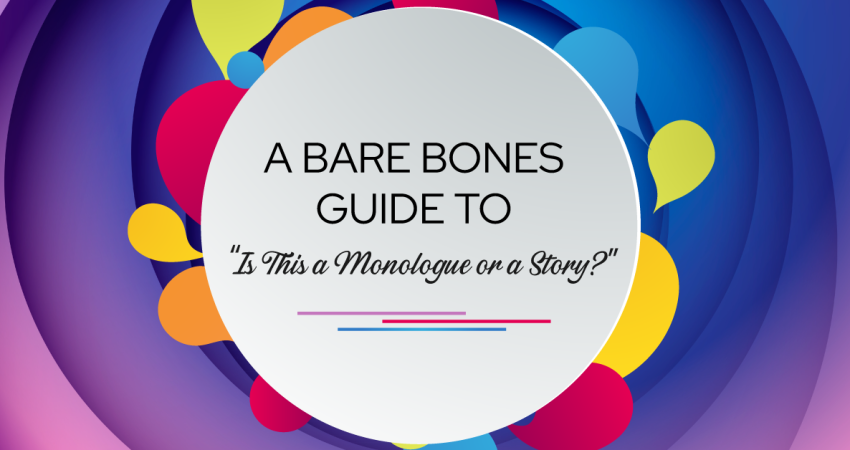Writing monologues is a skill that requires practice. When students learn to write monologues, it is easy for them to fall into the trap of writing a one-person story. The narrative structure of the story is familiar – we are taught to read and write stories from an early age.
The monologues are different. The purpose of a monologue is to communicate rather than simply describing or fairy tales something that has already happened. When we teach students how to write a monologue, our goal is to move them away from the narrative framework in which they are accustomed to writing and in a character communication experience.
Here’s a simple guide to the difference between a monologue and a story. This is not an exhaustive list of all the nuances that make up a monologue, but it is a good place to start, especially if students have never written a monologue before.
A monologue is:
- Written person I
- Spoken by a person to a listener
- Used to communicate something important
- Currently located, which is alive and active
- Urgent and full of action (The character has a need: a need to share, a need to reveal, a need to explain, etc.)
- A mini piece… NOT a story
One story is:
- I wrote the third person
- Spoken by one or more people to an audience
- Used to share an account of something that happened
- Set in the past, it’s over
- Often passive and / or impersonal (explaining something that happened to someone else or why something became the way it is)
- Fun, but not a monologue, even if it’s told by one person
If students are not sure if what they are writing is a monologue or a story, ask them to read their article and answer the following questions:
- Is this written in the first person or in the third person?
- Who is the character, a certain person or a general audience talking to?
- Communicate something or describe / tell something?
- Is it placed in the present or in the past?
- Is it active or passive?
Compare the answers with the points listed above (or use diagram at hand available for download below). If the student’s work is more appropriate to the first column, they wrote a monologue. If their song is more in line with the second column, they probably wrote a story. They will have to adjust or re-format their song to make it an active and communicative monologue.
Click here for a free printable chart Monologue vs.
Kerry Hishon is a director, actor, writer and stage fighter from London, Ontario, Canada. She blogs at www.kerryhishon.com.
Want to know more about our latest songs, resources and gifts?
Get on our list!

